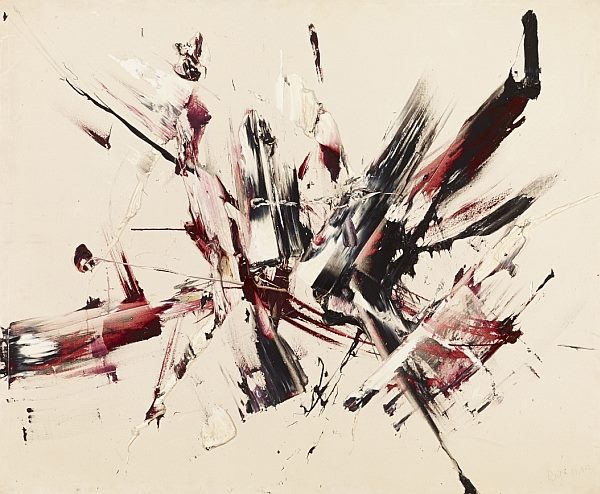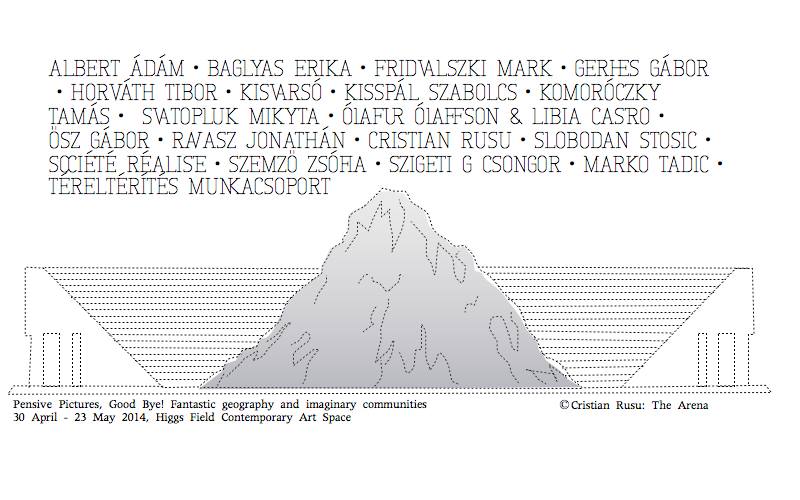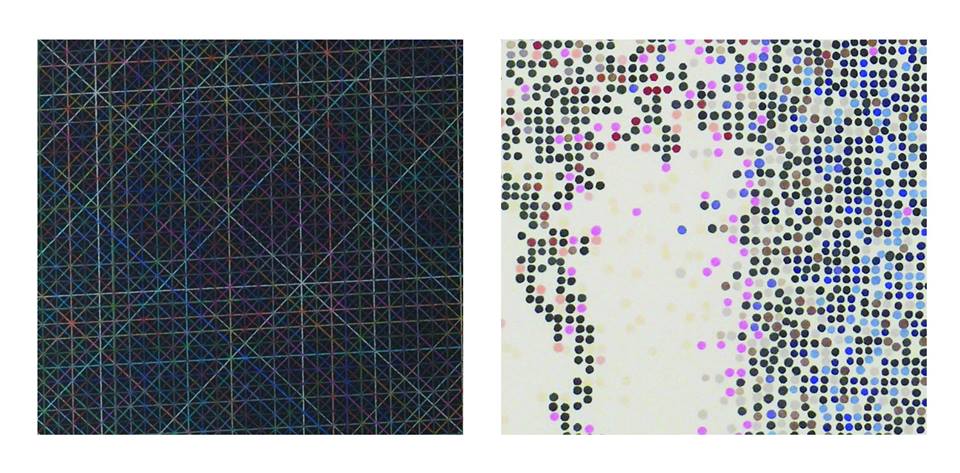"Art for art's sake is an empty phrase. Art for the sake of truth, art for the sake of the good and the beautiful, that is the faith I am searching for." - these words of wisdom echoed in our ears while we were searching for the most interesting Budapestian contemporary art galleries. In this turn, we focused on the smaller and not-so-well-known ones (so no Ludwig, for example), with their current exhibitions.
1/5
Trafó Gallery
Trafó Gallery is located in the Trafó House of Contemporary Arts; a multifunctional arts center. The building giving home to Trafó used to be the electrical transformer station for south Pest. Trafó Gallery houses the exhibitions of the most cutting-edge/actual artists like Gábor Gerhes, Navid Nuur, Jaroslav Kyša, Lőrinc Borsos, Vladimír Houdek or Ádám Kokesch. They invite both Hungarian and international artists to present their pictures/photographs/paintings and the entry is usually free.Current exhibition: BOOGIE WOOGIE - the group exhibition presents new abstract positionsin various genres and media of contemporary art, from painting to installation, through photography and graffiti; it also attempts to show the works of emerging artists who have consistently worked with an abstract program – and who mainly exhibited their works isolated from each other – in one space and in one thematic framework. Thus the exhibition provides a concentrated effort in interpreting and presenting the new artistic language of this Central-Eastern European generation. The exhibitors approachgeometric abstraction (which was previously banished and musealised to categories of art history) in an instinctive, non-referential way in order to use it as the basis of an entirely new, personal and a pure visual language.
2/5
Higgs Field
Higgs Mező (Higgs Field) is as multifunctional, as a place can be - their main focus is on video art and installations, but they also have a 'coffee corner' (we strongly encourage you to hop in for a cup) and sometimes they host exhibitions too. Since one of the two founders is an artist (Dávid Adamkó), the place was renovated with the aim of making it perfect for any kind of exhibitions, pop-up happenings and installations. The white walls and the open spaces may make you feel a bit uncomfortable at first, but it's easy to get used to them. Don't miss one of the most exciting places!Current exhibition: Pensive Pictures, Goodbye! - the group show thematizes what we would call geopolitical fantasies sprang into existence by artistic projects primarily from the CEE region, bringing under close scrutiny the historical relation of natural space and communities (society). The clandestine or explicitly expressive moral, ideological and political agenda of the territorial references settled on the view or terrain by power structures is problematized by the works exhibited. Thus revealing 'the black side of the landscape', the 'hard facts' behind the once aesthetically or ideally concieved image of the living space.
3/5
Chimera Project
The Chimera-Project is a program gallery, established in 2012 in Budapest. Our gallery program is built on curated, thematic exhibitions to generate a meaningful discourse in contemporary art around relevant artistic and social topics. Through its founders, Chimera-Project has a strong international orientation: Patrick Urwyler is a Swiss art historian and curator and Bogi Mittich is a Hungarian sociologist. They've worked in several art institutions in Bern, Berlin and Budapest. Based on the founder's background, Chimera Project's goal is to support international exchange. Their annual program consists of two interrelated sections of exhibitions: one section they realize in the gallery space in Budapest and the other abroad through various projects.Current exhibition: On The Peripheral Orbit - the exhibition examines art about art, that reflects the artworld’s mechanisms, dynamics and stakeholders. The exhibition has a special focus on the role of the artist in the art world and also their recognition beyond this system. By inviting András Cséfalvay and the Kassaboys the artists role will be exemplified with two installations that both reflect the artist “on the peripheral orbit”. The last round of Chimera-Project’s Interart program with its focus on Slovakia.
4/5
Várfok Gallery
Várfok Gallery is one of the first privately founded galleries after the political changes of '89, showing contemporary art in Hungary that has been able to function continuously to this day. Károly Szalóky founded it under the name Várfok 14 Műhelygaléria/Várfok 14 Studio Gallery in 1990. By representing an international set of guidelines for galleries and by mediating fine arts of high quality, the gallery operates as a program-gallery. During more than twenty years since its inception a circle of artists has evolved that cooperates with the gallery on a long-term basis, some of them carrying an exclusive gallery contract. At first, the gallery was characterized by a decidedly grotesque, frivolous tone thanks to the artists shown, such as László feLugossy, Imre Bukta, Pál Gerber, György Kungl, József Szurcsik, Gábor Roskó. Later the key figures of Hungarian contemporary art co-operated with the gallery as well, including István Nádler, János Szirtes, András Koncz, László Fehér, El Kazovszkij. The gallery has organized solo exhibitions for more than sixty artists and by now a core group of 19 artists developed, who show new work on a regular basis. This circle is completed with the group of young emerging talents gathered undr the Spiritusz Section.
Current exhibition: Jovanovics Tamás & Keserü Károly - zen(e) I mus(e)ic. With this joint exhibition of Tamás Jovanovics and Károly Keserü the venue of Várfok Gallery rises to ethereal heights. The geometrical web of colourful dots and lines woe the space, the constant pulse of repetitive musical rhythms brings the waves of otherworldly tunes. Based on the utmost ancient and simplified forms, the artworks are worthy heirs of the 20th century abstract geometrical tendencies. Even if we focus on the fixed threads in layered wax and colourful dots, or the network of parallel or crossing pencil drawn lines, we are viewers of micro cosmoses widening towards infinity, mediums of existential questions, eternal truth and personal universes. Surprisingly there is a playfulness of colours in the mathematical mellowness, the happiness of elaboration in repetitive works, which leads to the weightlessness of the compositions. As if nothing was more natural, than what we see. Cosiness covers us, the glimpses of long awaited answers to eternal questions with the feel, that existing could also be easy.
5/5
ACB Gallery
Founded in 2003, acb Gallery’s mission is to represent progressive contemporary art in Hungary and internationally. The young and mid-generation artists represented by the gallery share the characteristics of conceptual principles, regardless to media they work in. The gallery’s aim to be a link between contemporary art and its audience. To give a platform for artists for presenting their work in a professionally supported context and to give a platform for collectors, professionals and the broader audience to get connected with the art represented by the gallery. Besides the solo shows of gallery artists group shows also have a great importance in acb Gallery’s program. Current exhibition: Szalay Péter - Double Vision. A solo exhibition by Péter Szalay is presented at the acb Gallery for the second time. Double Vision can be regarded as a continuation of Szalay’s 2013 show entitled Residual Value. His work at the time reflected on the renovation of the gallery, turning the debris created during the construction process into artwork. The installations, the ironically stylized and polished small sculptures inspired by porcelain figurines featured at the present exhibition Double Vision hold a mirror to the new, “trendy and sterile” gallery space. Szalay approaches his subject with the usual varied use of media and characteristically biting humour. His grotesque creations not only bring into play the aesthetic quality of symmetry, but also criticize the “schizophrenic” state of Hungarian society, which has split in two of its own accord, and the country’s dysfunctional multi-party system. The exhibition is replete with the possibilities created by blurring the lines of ethnography, iconography and kitsch, guiding the viewer to the experience of indecision and a sense of it deepening into fate.









